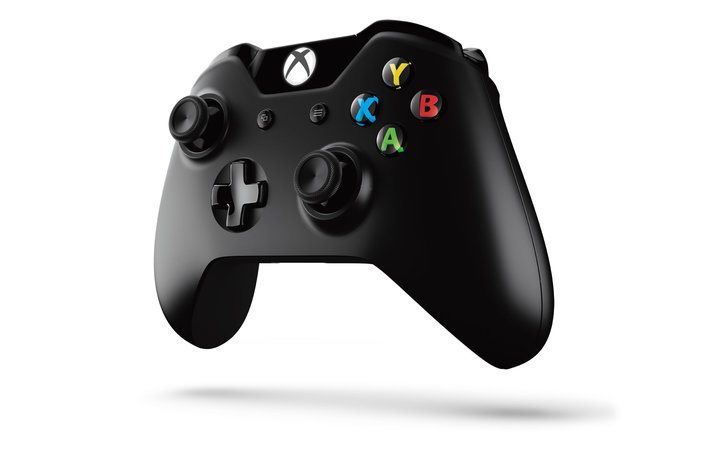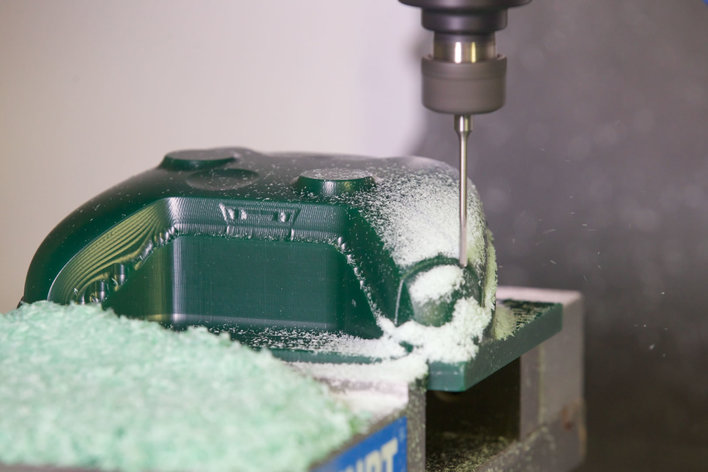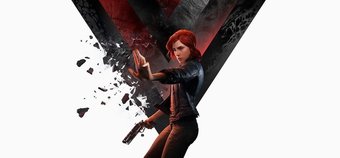Although most of the focus at Microsoft's reveal of their latest console, the Xbox One, was placed squarely on a combination of the box itself, TV, and the new Kinect sensor, the console's all-new, redesigned controller is also worth taking a closer look at. Although things look fairly similar on the surface, Microsoft have touted an impressive 40 "technical and design innovations" lying underneath, with a number of tweaks, adjustments, and revisions designed to make the controller that much more practical.

The new controller.
Perhaps the most obvious change in the style of the controller is in the new, more angular shape. Slightly larger, fatter, and chunkier than before, the new controller bears a striking resemblance to the original Xbox's whopping great pad, although is apparently of a more manageable size. With a more ergonomic and comfortable design, the controller also sports a redesigned D-Pad in the bottom left, which is bound to come as a relief to anyone who's tried to use the 360's current odd, circular eight-way pad. Trying to make accurate inputs in fighting games, or anything else that required a certain amount of precision was a real challenge on the Xbox 360, so it's nice to see this has been improved for the Xbox One.
Meanwhile, the analogue sticks have been given a rather fetching ribbed edge, to increase grip for those of us with particularly sweaty hands, while the Back and Start buttons have been replaced by two brand new buttons - although it's not currently clear what these are for. One, where the Start button used to be, has a series of horizontal lines on it, which may be used for bringing up a messaging system, while the other has two interlocking squares, which could be used for switching between open apps - although we'd imagine we're probably just clutching at straws.
More interestingly, the new controller offers a new, advanced rumble technology, with both triggers having individual rumble sensors. Letting you feel the sensation of a wheel skidding as you pull away, or the clunk of a bullet leaving a gun, for example, the rumbling triggers is an interesting idea, but it's not the only new feature. The controller will also come packing an infra red LED to allow Kinect to track where you are - much like the PS4's DualShock 4 lightbar - although we have yet to see what application this will have in games. Using the controller like a Wii Remote, perhaps? We shall see.
Sadly, though, not all the news about the new controller is positive, as the pad will be ditching the headphone jack at the bottom of the controller, instead coming with a new, proprietary input for your audio needs. While the redesign means any existing headsets won't work with the new console, Microsoft have also announced that the console won't ship with a headset in the box - which would suggest that you'll have to use Kinect to talk to your friends, and have their voices come out the TV, unless you shell out more for an Xbox One headset.

The controller's design has been iterated upon on an almost daily basis using a 3D printer.
Either way, having made a substantial investment into their new controller (a video showed the Xbox testing plant, where the controllers were set up on a torture rack, with each of their buttons being pressed over a million times to check they can take the strain), it's nice to see that traditional, controller based gameplay is still a key feature of Microsoft's next console, alongside the much improved Kinect. While we're eager to see how the two will work together, we can't expect we'll have to wait much longer to find out - with the world's largest gaming convention, E3, now just around the corner.














